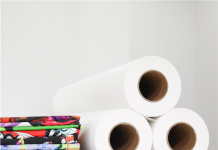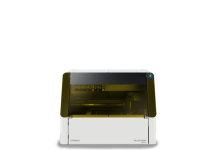Boat manufacturers have been relatively slow to adopt 3D printing technology compared to other industries. Yet, researchers say that by 2030, 3D printed yachts and superyachts could become widely accepted as the norm. Naval architect Gregory Marshall, in a 2017 superyacht design symposium, stated that ‘3D printing can disrupt almost every aspect of our industry. Whatever we can imagine, we can now manufacture.’
David Evanhaim, writing for Massivit 3D, said that when you think about the process of manufacturing a boat, the last tool you’d think to use is a printer. But with the accelerated innovation of 3D printing, a printer is becoming a necessity to keep up with the competition, the demand and competitive costs. Due to the harsh conditions, these components are meant to be used in, the maritime industry has a unique set of challenges to overcome when choosing its method of manufacturing.
The University of Maine unveiled the world’s first 3D printed single piece boat built by the world’s largest 3D printer in 2019. The boat measured at 7.62m (25 feet) long and weighed 2268kg (5000 pounds) and took only 72 hours to make. One year later, MAMBO printed the first functional fibreglass boat which set the standard for ultra-durable and lightweight boat designs.
The maritime industry is responsible for facilitating 90% of global trade between countries. The industry includes ship manufacturing, shipping companies, logistics companies, ship repair, maintenance companies, and port authorities. All these individual entities, at some level, are exploring the adaptation of 3D printing into their manufacturing process.
The industry is facing significant challenges, from regulations to aging vessels and overcapacity. These challenges make it necessary to reinvigorate the industry with new technologies and processes to make it more agile and profitable for vendors and consumers.
There are ancient techniques that are still used to build ships and boats to sail through all types of currents. The most popular techniques can be split into two ‘boats’. The shell-first technique involves constructing the shell of the boat first, then laying in the framework. While on the other hand, the frame-first technique involves laying down the framework of the vessel before constructing the external body to hold everything together. Both of these methods are very labour intensive and inefficient in their use of raw materials.
The most common materials used in boats are wood, glass, reinforced plastic, aluminium, steel and ferrocement. Until now the most common method of production has been to create several molds and piece them together. This process is very time consuming and is very costly for the customer.
Using 3D printing, boat builders are able to overcome these challenges. Introducing this technology into a production workflow allows manufacturers incredible flexibility and speed, resulting in the ability to handle higher volume workloads. Creating boat parts and customisations with a 3D printer means endless geometric capabilities, large size, and a seamless ability to combine with other materials for a finished product. This process ensures the least amount of waste, without sacrificing high durability.
Traditional boat manufacturing methods like CNC milling use an excessive amount of materials, resulting in high levels of waste. In contrast, 3D printed models and parts waste less material, using only what is needed to create the piece and reducing overall costs. This is in sharp contrast to other technologies, where a typical shipyard sees about 15 to 20 percent raw material wastage.
Along with the decreased amount of waste comes time efficiency in the use of 3D printing. Damaged boat parts can easily be replaced without having to track down spare parts that are often in limited supply or aren’t specific to your vessel. A paper written by researchers from the University of the Aegean posits that 3D printing can be used to streamline the spare parts supply chain by allowing spare parts to be 3D printed by the end user at the place it is needed rather than going to a shop and purchasing parts individually, which takes days or weeks to produce and ship. Now, you can 3D print the specific part from your own facilities.
3D printers are used to enhance the production of maritime vehicles in every way possible. Using breakthrough technology, you can create a wide range of customised maritime end-use parts such as dashboards, radars, antennas, roofs and fins to fit any size boat. All at speeds up to 30 times faster than traditional manufacturing methods in the marine industry.
Thanks to the size of 3D printers, a large single-piece can be created, greatly reducing the number of required components needed to finalise a build. In addition, the printed parts are hollow, therefore they can serve as wiring conduits for electric devices such as radar antennas. This is a big advantage for boats and yachts, as these components are 100% hermetically sealed to shield against saltwater corrosion. As boat making and customisation grows, manufacturers are turning to 3D printing to overcome their challenges and unleash their creativity.
MASSIVIT
https://massivit3d.com/















